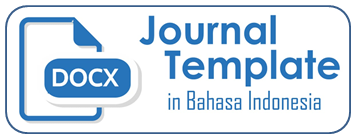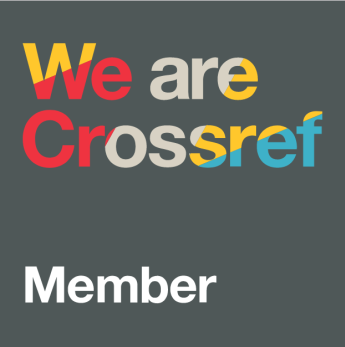NEGATIVE BODY IMAGE TRIGGERS ADOLESCENTS TO EXPERIENCE AN EATING DISORDER
DOI:
https://doi.org/10.22460/quanta.v6i3.3334Keywords:
Body Image, Eating Disorder, Anorexia Nervosa, Bulimia Nervosa, AdolescentsAbstract
Remaja yang merasa tidak puas dengan penampilan dirinya, dapat mengalami eating disorder. Hal ini diakibatkan oleh konsep body image seseorang yang buruk (persepsi negatif) dan ketidakpuasan terhadap tubuh yang dimiliki sehingga dapat menimbulkan dorongan untuk menjadi lebih kurus. Adapun empat faktor penyebab gangguan makan anorexia nervosa dan bulimia nervosa yaitu faktor sosio-kultural, faktor psikologis, faktor keluarga, dan faktor biologis. Metode yang digunakan pada penelitian ini yaitu studi literatur dengan pendekatan kualitatif. Hasil penelitian terdahulu menunjukan bahwa adanya kesesuaian dengan pernyataan bahwa body image merupakan sikap yang dimiliki individu terhadap tubuhnya, berupa penilaian positif dan negatif, juga didukung oleh hasil penelitian – penelitian terdahulu yang menjelaskan bahwa adanya hubungan antara body image negatif dengan eating disorders. Hal ini berkolerasi dengan hasil penelitian yang menjelaskan bahwa 26,1% body image berpengaruh terhadap kecenderungan seseorang memiliki eating disorder.
References
Aini, N. Q., & Fahriza, I. (2020). FLOW AKADEMIK PADA PENDIDIKAN. Jurnal Dinamika Pendidikan, 13(3), 369–376. https://doi.org/10.33541/jdp.v12i3.1295
Al Vianita, F., Kurniawati, D., & Juliningrum, P. P. (2020). Description of Knowledge, Attitude, and Behavioral Breastfeeding on Working Mother in the Arjasa Community Health Center Working Area in Jember Regency. Jurnal Ilmu Keperawatan (Journal of Nursing Science), 8(1), 1–9. https://doi.org/10.21776/ub.jik.2020.008.01.1
Alidia, F. (2018). Body Image Siswa Ditinjau Dari Gender. Tarbawi : Jurnal Ilmu Pendidikan, 14(2), 79. https://doi.org/10.32939/tarbawi.v14i2.291
Anindita, S. M. (2021). Model Remaja Putri: Body Image dan Bulimia Nervosa. Muqoddima Jurnal Pemikiran Dan Riset Sosiologi, 2(1), 19–36. https://doi.org/10.47776/mjprs.002.01.02
Bucchianeri, M. M., Arikian, A. J., Hannan, P. J., Eisenberg, M. E., & Neumark-sztainer, D. (2013). Body dissatisfaction from adolescence to young adulthood : Findings from a 10-year longitudinal study. Body Image, 10(1), 1–7. https://doi.org/10.1016/j.bodyim.2012.09.001
Cash, T. F., & Deagle, E. A. (1997). The nature and extent of body-image disturbances in anorexia nervosa and bulimia nervosa: A meta-analysis. International Journal of Eating Disorders, 22(2), 107–126. https://doi.org/10.1002/(SICI)1098-108X(199709)22:2<107::AID-EAT1>3.0.CO;2-J
Cash, T. F., & Pruzinsky, T. (2002). Body Image : A Handbook of Theory, Research, and Clinical Practice. In T. F. Cash & T. Pruzinsky (Eds.), The Guilford Press (first, Issue 2). The Guilford Press.
Denich, A. U., & Ifdil, I. (2015a). Konsep Body Image Remaja Putri. Jurnal Konseling Dan Pendidikan, 3(2), 55. https://doi.org/10.29210/116500
Denich, A. U., & Ifdil, I. (2015b). Konsep Body Image Remaja Putri. Jurnal Konseling Dan Pendidikan, 3(2), 55–61. https://doi.org/10.29210/116500
Ferreira, C., Pinto-Gouveia, J., & Duarte, C. (2013). Self-compassion in the face of shame and body image dissatisfaction: Implications for eating disorders. Eating Behaviors, 14(2), 207–210. https://doi.org/10.1016/j.eatbeh.2013.01.005
Gattario, K. H., & Frisén, A. (2019). From negative to positive body image: Men’s and women’s journeys from early adolescence to emerging adulthood. Body Image, 28, 53–65. https://doi.org/10.1016/j.bodyim.2018.12.002
Ifdil, I., Denich, A. U., & Asmidir, I. (2017). Hubungan Body Image dengan Kepercayaan Diri Remaja Putri. Jurnal Kajian Bimbingan Dan Konseling, 2(3), 107–113.
Kim, J. H., & Lennon, S. J. (2007). Mass media and self-esteem, body image, and eating disorder tendencies. Clothing and Textiles Research Journal, 25(1), 2–23. https://doi.org/10.1177/0887302X06296873
Krisnani, H., Santoso, M. B., & Putri, D. (2018). Gangguan Makan Anorexia Nervosa Dan Bulimia Nervosa Pada Remaja. Prosiding Penelitian Dan Pengabdian Kepada Masyarakat, 4(3), 399. https://doi.org/10.24198/jppm.v4i3.18618
Kusnadi, G. A. zahra. (2021). SELF INJURY IN ADOLESCENTS THAT MAY DISTURB THE MENTAL HEALTH. Psikoedu : Jurnal Psikologi Edukasi Dan Konseling, 1(25), 11–23.
Lestari, P., & Mubarok, A. S. (2021). Hubungan Citra Tubuh dengan Kecenderungan Anorexia Nervosa pada Santri Putri. Jurnal Psikologi Talenta Mahasiswa, 1(1), 105–118.
Littleton, H. L., & Ollendick, T. (2003). Negative body image and disordered eating behavior in children and adolescents: What places youth at risk and how can these problems be prevented? Clinical Child and Family Psychology Review, 6(1), 51–66. https://doi.org/10.1023/A:1022266017046
Mulyati, H., Ln, S. Y., & Supriatna, M. (2020). Emotion Regulation in Adolescents 3 . RESULT AND DISCUSSION. Advances in Social Science, Education and Humanities Research, 399(Icepp 2019), 129–132.
Nuroniah, P., Nisa, G. O. K., & ... (2022). Dinamika Emosi Akademik Pada Mahasiswa Baru. JBKI (Jurnal …, 7, 74–82.
Olivardia, R., Pope, H. G., Borowiecki, J. J., & Cohane, G. H. (2004). Biceps and body image: The relationship between muscularity and self-esteem, depression, and eating disorder symptoms. Psychology of Men and Masculinity, 5(2), 112–120. https://doi.org/10.1037/1524-9220.5.2.112
Ramanda, R., Akbar, Z., & Wirasti, R. A. M. K. (2019). Studi Kepustakaan Mengenai Landasan Teori Body Image Bagi Perkembangan Remaja. JURNAL EDUKASI: Jurnal Bimbingan Konseling, 5(2), 121. https://doi.org/10.22373/je.v5i2.5019
Ratnawati, V. (2012). Percaya Diri, Body Image dan Kecenderungan Anorexia Nervosa Pada Remaja Putri. Persona:Jurnal Psikologi Indonesia, 1(2). https://doi.org/10.30996/persona.v1i2.39
Sari, C. A. L., & Soejiningsih, C. H. (2021). HUBUNGAN ANTARA BODY IMAGE DENGAN PERILAKU DIET PADA SISWI DI SMA KRISTEN 1 SALATIGA. Jurnal Psikologi Konseling, 18(1), 910–925.
Stice, E., & Shaw, H. E. (2002). Role of body dissatisfaction in the onset and maintenance of eating pathology A synthesis of research findings. Journal of Psychosomatic Research, 53, 985–993. https://doi.org/doi:10.1016/s0022-3999(02)00488-9
Syifa, R. S. A., & Pusparini, P. (2018a). Persepsi tubuh negatif meningkatkan kejadian eating disorders pada remaja usia 15-19 tahun. Jurnal Biomedika Dan Kesehatan, 1(1), 18–25. https://doi.org/10.18051/jbiomedkes.2018.v1.18-25
Syifa, R. S. A., & Pusparini, P. (2018b). Persepsi tubuh negatif meningkatkan kejadian eating disorders pada remaja usia 15-19 tahun. Jurnal Biomedika Dan Kesehatan, 1(1), 18–25. https://doi.org/10.18051/jbiomedkes.2018.v1.18-25
Verplanken, B., & Velsvik, R. (2008). Habitual negative body image thinking as psychological risk factor in adolescents. Body Image, 5(2), 133–140. https://doi.org/10.1016/j.bodyim.2007.11.001
Downloads
Published
How to Cite
Issue
Section
License
Copyright (c) 2022 QUANTA

This work is licensed under a Creative Commons Attribution-ShareAlike 4.0 International License.
Quanta: Jurnal Kajian Bimbingan dan Konseling dalam Pendidikan is licensed under a Creative Commons Attribution-ShareAlike 4.0 International License. Authors who publish with the Quanta Journal agree to the following terms:
- Authors retain copyright and grant the journal right of first publication with the work simultaneously licensed under a Creative Commons Attribution License that allows others to share the work with an acknowledgment of the work's authorship and initial publication in this journal.
- Authors are able to enter into separate, additional contractual arrangements for the non-exclusive distribution of the journal's published version of the work (e.g., post it to an institutional repository or publish it in a book), with an acknowledgment of its initial publication in this journal.
- Authors are permitted and encouraged to post their work online (e.g., in institutional repositories or on their website) prior to and during the submission process, as it can lead to productive exchanges, as well as earlier and greater citation of published work.




























